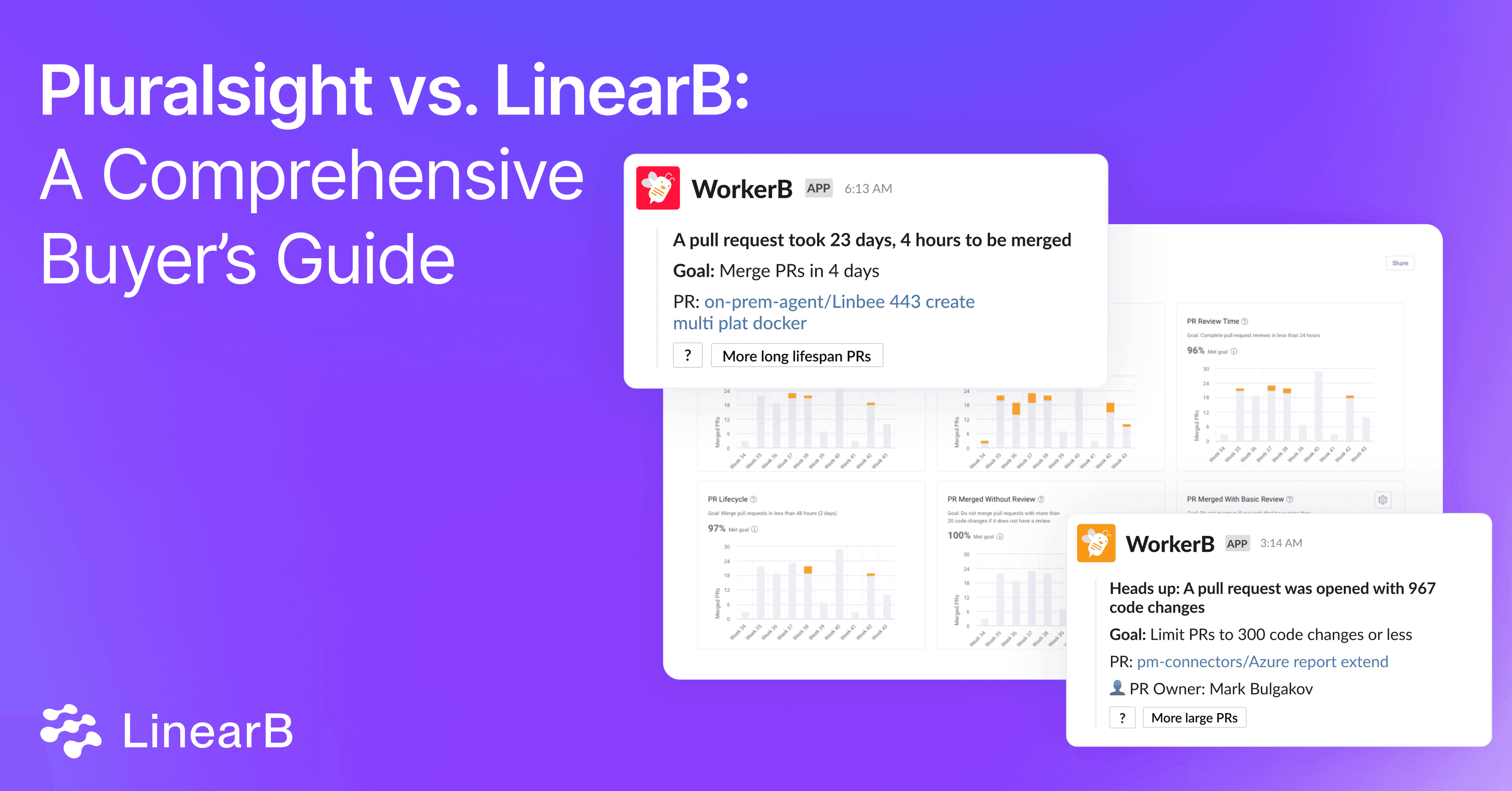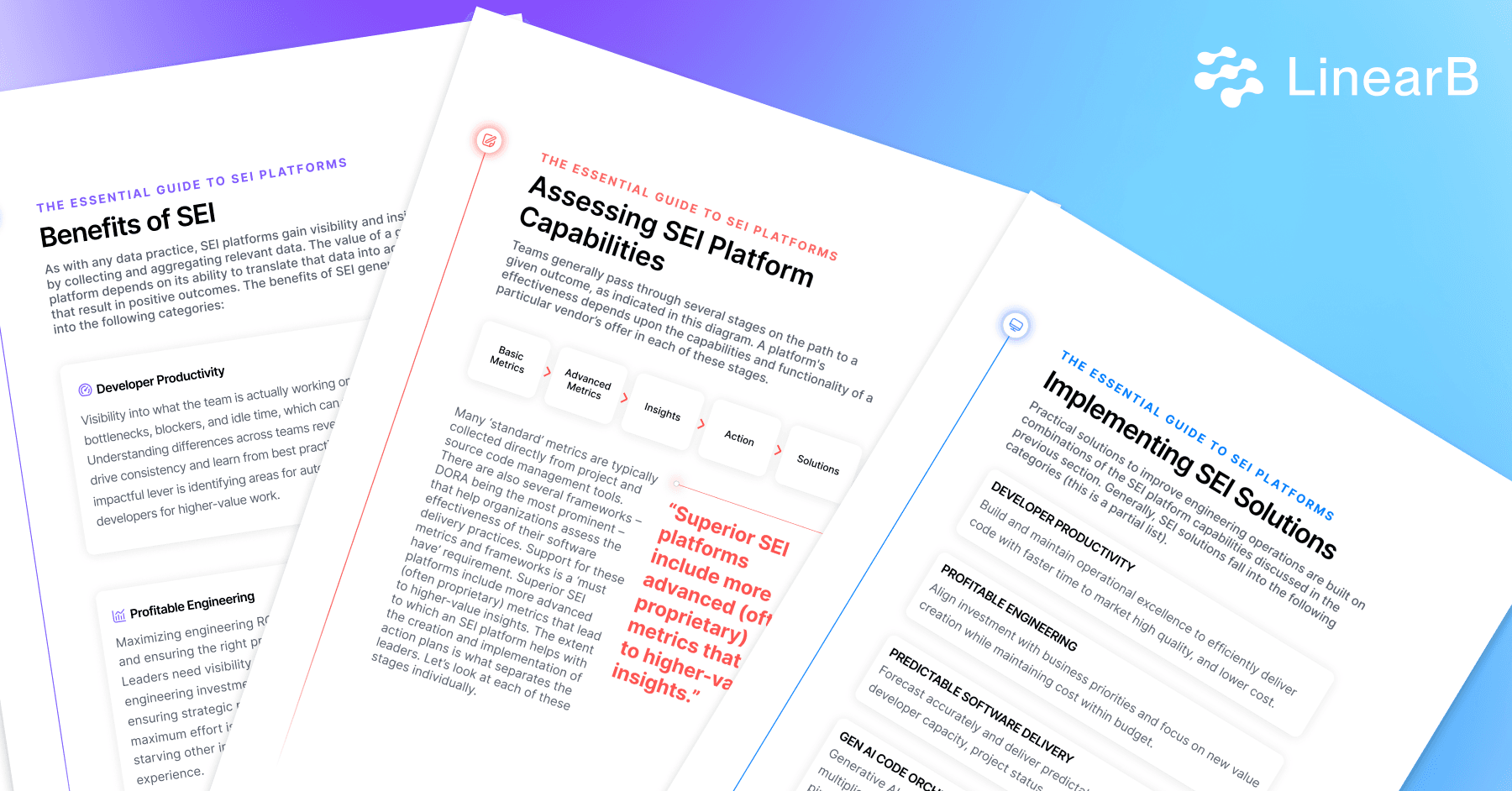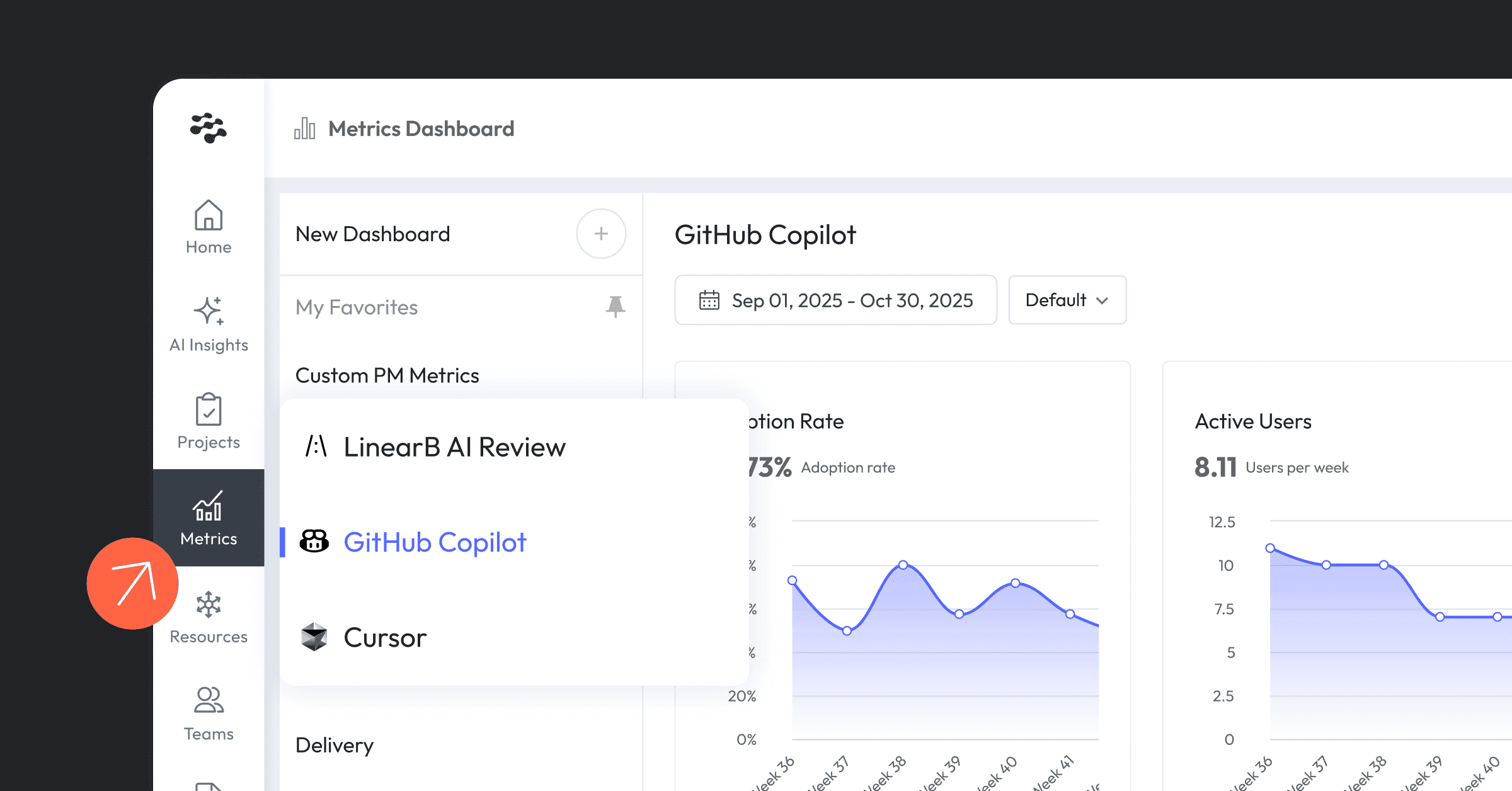When it comes to scaling engineering efficiency and building high-performing software teams, the tools you choose matter. Software engineering intelligence (SEI) platforms are pivotal in providing visibility, insights, and automation that help leaders make informed decisions. For engineering managers, directors, and executives, selecting the right platform can significantly impact your team's productivity and your organization's ability to deliver predictable value.
One of the most common dilemmas is deciding between Pluralsight vs. LinearB, two prominent SEI platforms that cater to distinct aspects of engineering management. This article will summarize the key differentiators between these platforms and provide strategic recommendations for teams looking to invest in an SEI solution that aligns with both their immediate and long-term goals.
Pluralsight vs. LinearB: Best Tools for Engineering Analytics
Both LinearB and Pluralsight Flow offer metrics and insights, but their focus areas and approaches vary significantly. LinearB (a Pluralsight Alternative) prioritizes developer experience (DevEx) and operational efficiency through automation and context-rich data, while Pluralsight Flow (formerly known as GitPrime) emphasizes historical reporting and individual performance metrics. Understanding these core distinctions is crucial for engineering leaders seeking to improve team efficiency without compromising the developer experience.
1. Pluralsight vs. LinearB: Developer-Centric Approach vs. Process-Centric Approach
LinearB takes a developer-centric approach, using metrics and automation to improve the daily workflows of engineering teams. The platform features tools like the WorkerB bot assistant, which helps automate repetitive tasks such as pull request (PR) notifications, status updates, and review reminders. Additionally, LinearB’s gitStream workflow automations ensure that code reviews are routed efficiently and contextually, minimizing bottlenecks.

In contrast, Pluralsight Flow is more process-centric, focusing on reporting historical data around individual developer performance. While it provides insights into productivity, code churn, and delivery speed, its primary use case is often rooted in post-mortem analysis rather than real-time optimization of engineering workflows. This can be limiting for teams looking for actionable insights that impact ongoing projects.
2. Pluralsight vs. LinearB: Real-Time Operational Intelligence vs. Historical Reporting
One of the key differentiators between LinearB and Pluralsight Flow is how they handle data. LinearB’s dashboards, such as the Predictable Project Delivery Dashboard and the Developer Coaching Dashboard, provide real-time insights into project risks, resource allocation, and individual developer impact. This enables engineering leaders to make timely decisions that optimize delivery and resource use.
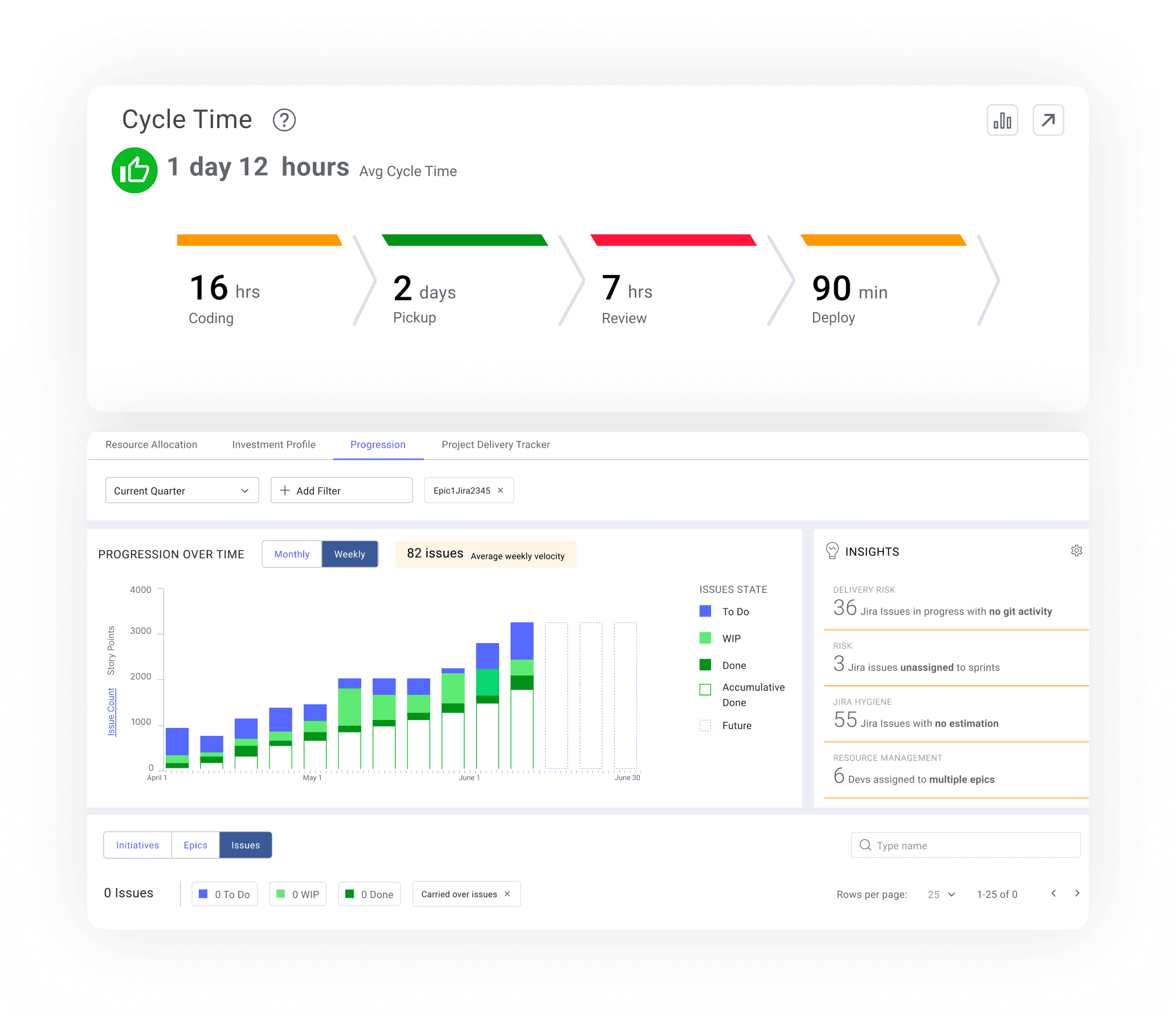
Pluralsight Flow, on the other hand, aggregates data to offer a retrospective view of engineering efficiency. While this is useful for identifying patterns and assessing past performance, it lacks the proactive capabilities of LinearB, making it less suited for engineering leaders who need to make decisions quickly to course-correct ongoing projects.
3. Pluralsight vs. LinearB: Focus on Developer Experience (DevEx)
LinearB uniquely positions itself as a DevEx-first platform. Beyond the standard DORA metrics, it provides granular insights that help leaders optimize team dynamics and maintain a healthy engineering culture. For example, LinearB’s Team Goals Dashboard allows managers to set objectives for PR size, review times, and pickup times, helping teams avoid burnout and maintain a sustainable workflow.
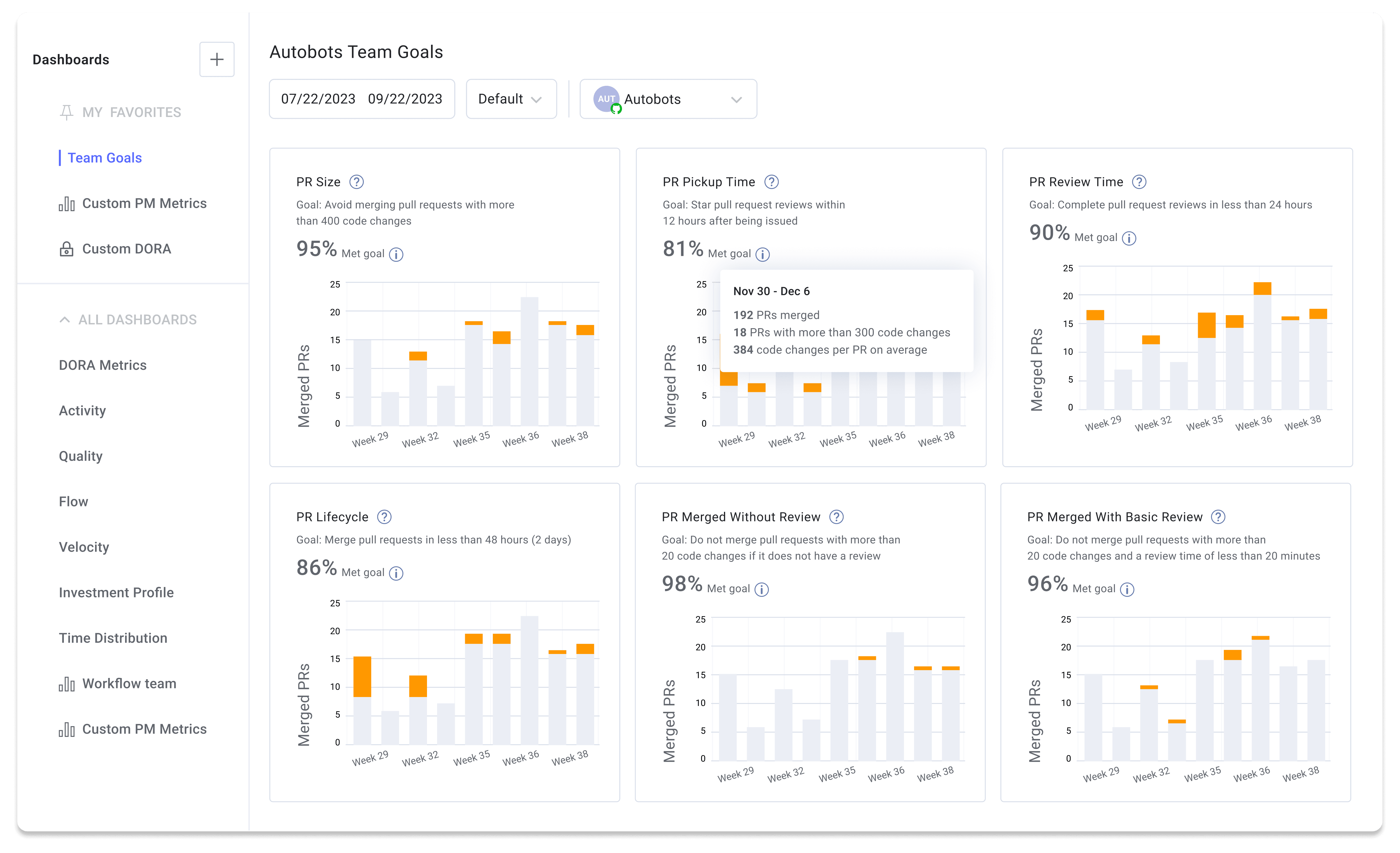
In contrast, Pluralsight Flow's focus is more on productivity analytics, which can sometimes result in a reductionist view of developer contributions, leading to potential negative impacts on morale and team cohesion.
Recommendations for Teams Investing in an SEI Platform
Investing in an SEI platform is not just about choosing a tool—it's about aligning your investment with your broader engineering strategy. Here’s a detailed guide to help you make the right choice:
1. Pluralsight vs. LinearB: Align SEI with Your Business Objectives
First, determine what outcomes you want to achieve with your SEI platform. If your goal is to increase developer productivity and promote a culture of continuous improvement, choose a platform that prioritizes DevEx and operational intelligence, like LinearB. The right SEI platform should also support business goals such as predictability in delivery and visibility into engineering investments.
Learn more about accelerating developer productivity in our recent guide.
2. Pluralsight vs. LinearB: Prioritize Real-Time Actionability Over Retrospective Analysis
Engineering leaders need more than just post-mortem data—they need insights they can act on in real time. LinearB’s real-time project risk identification and workflow automation capabilities make it a strong choice for teams looking to optimize in-flight work and minimize delivery risks. Pluralsight Flow's historical data is valuable but less actionable, making it better suited for teams focused on long-term trend analysis.
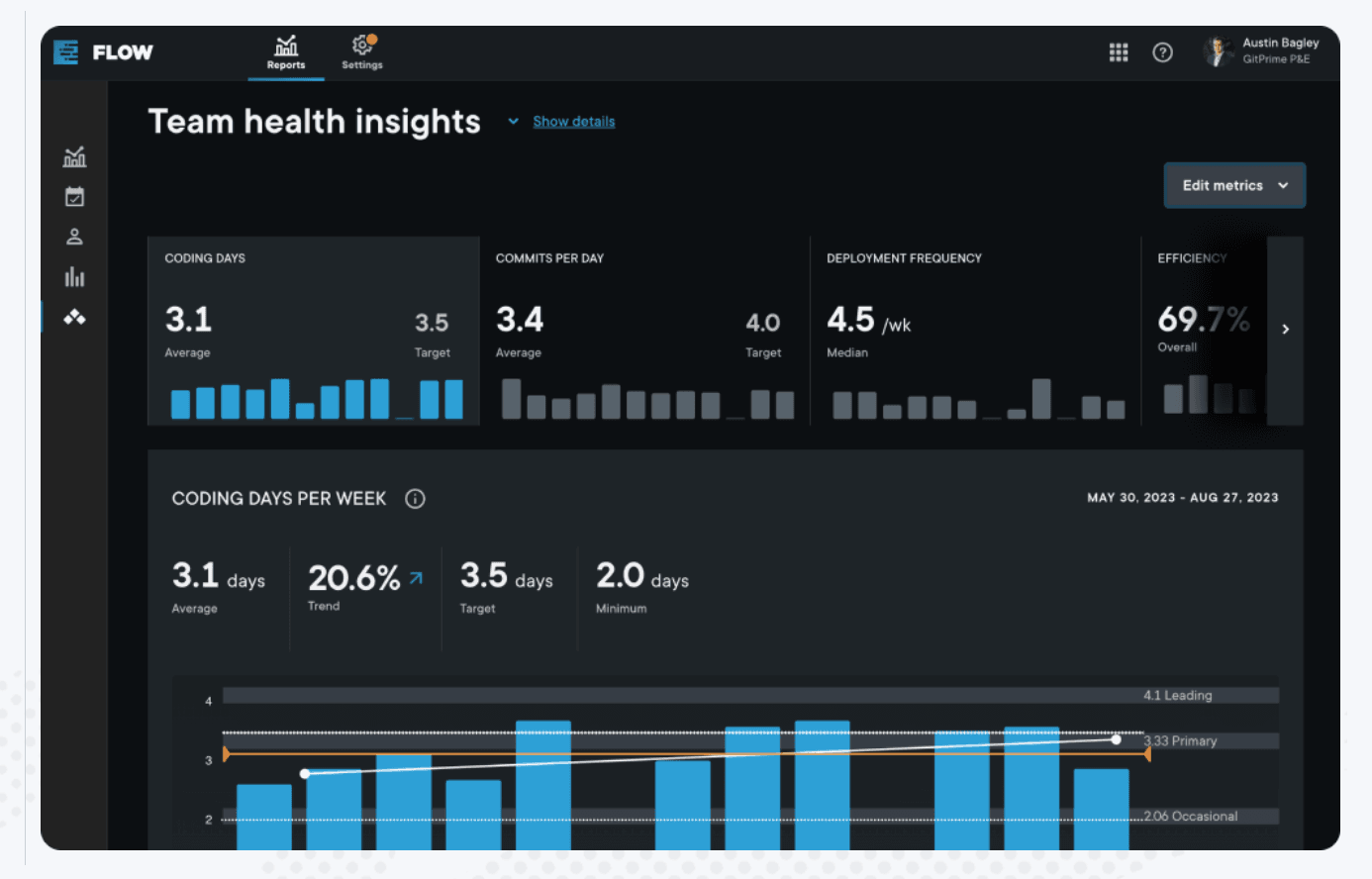
3. Pluralsight vs. LinearB: Focus on the Developer Experience and Team Health
High-performing teams are not just about speed—they are also about sustainability and health. Metrics should be used to drive positive behaviors, not create anxiety or burnout. LinearB’s emphasis on setting and tracking team-based goals (e.g., PR size and review times) ensures that metrics are contextual and aligned with healthy team dynamics.
For deeper insights into maintaining a positive team culture, explore our article on Team Working Agreements.
4. Pluralsight vs. LinearB: Evaluating Features for Engineering Productivity
Manual bottlenecks in code reviews and project management are one of the biggest drains on developer productivity. Look for platforms that offer workflow automation, such as LinearB’s gitStream, which routes code reviews based on context, priority, and developer availability. This reduces the time spent on non-coding activities and accelerates delivery timelines.

5. Pluralsight vs. LinearB: Invest in Tools That Enable Growth and Coaching
Engineering managers are increasingly responsible for the professional growth of their teams. Platforms like LinearB, which offer a Developer Coaching Dashboard, are ideal for identifying opportunities for mentorship and skill development. This approach not only improves individual performance but also contributes to overall team growth.
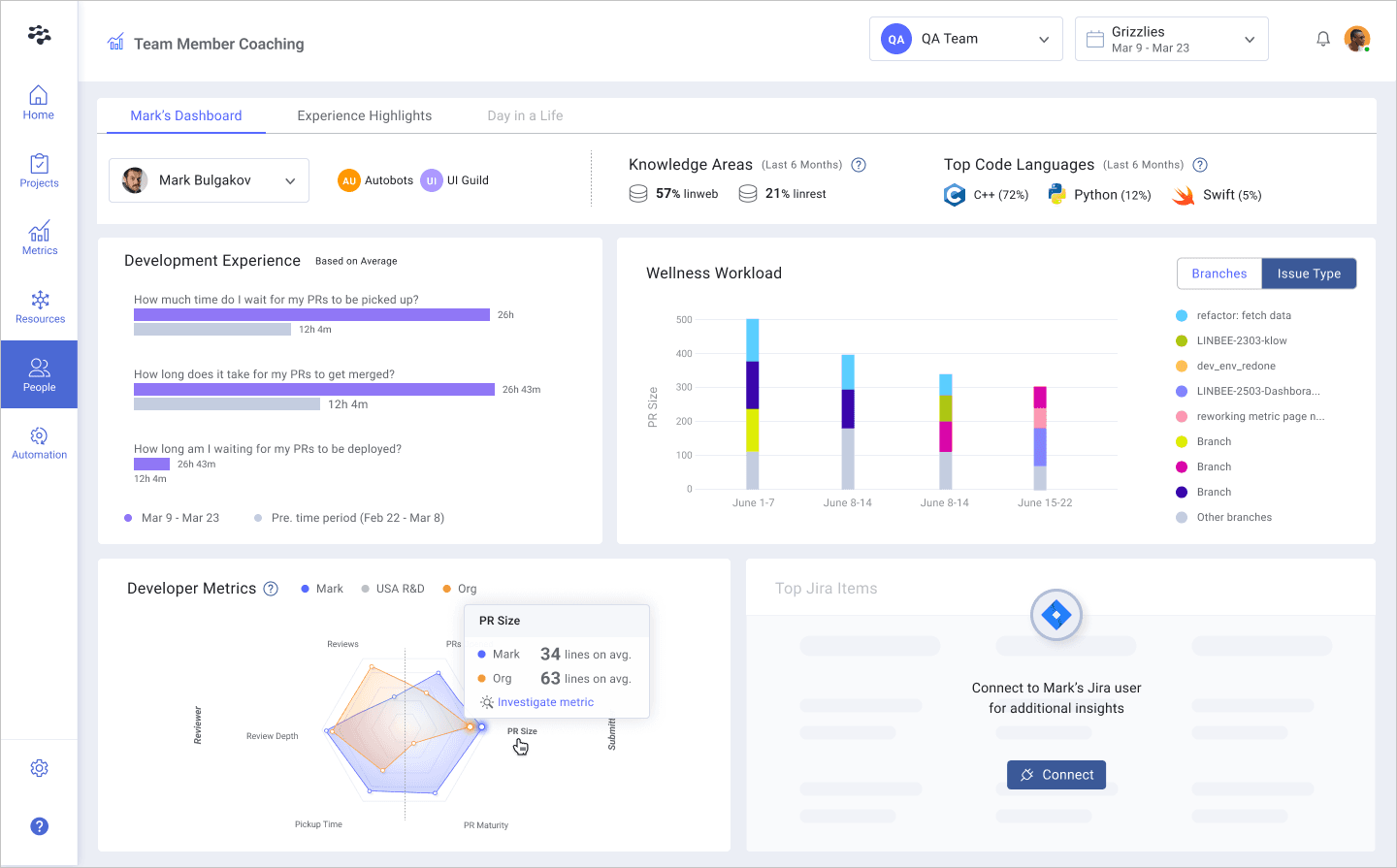
If you want to set up structured coaching and professional development strategies, check out our Modern Practices for Goal Setting in Software Engineering Workshop.
6. Pluralsight vs. LinearB: Cost and Value Analysis for Development Teams
While individual developer metrics can offer insights, they should be contextualized within the broader business impact. LinearB’s Investment Profile Dashboard and Resource Allocation Dashboard enable leaders to see where engineering time is being spent—whether on new value generation or maintenance—and make adjustments to optimize return on engineering investment.
To learn more about how to align engineering goals with business outcomes, explore our Engineering Leader Guide to Goals and Reporting.
Pluralsight vs. LinearB: Making an Informed Decision
When it comes to Pluralsight vs. LinearB, ultimately the choice depends on your team’s unique needs and strategic goals. If you prioritize developer experience, real-time operational insights, and actionable automation, LinearB (a Pluralsight Alternative) stands out as the SEI platform that not only optimizes performance but also enhances team health and alignment with business objectives.
Pluralsight Flow may be a fit for teams seeking deep-dive historical analysis, but for engineering leaders who want to unlock growth, productivity, and a proactive engineering culture, LinearB’s holistic approach offers a future-proof solution.
By choosing the right platform, you empower your engineering teams to thrive, align their efforts with business goals, and achieve predictable delivery at scale.
Want to learn more about how you can assess SEI platforms to make an informed decision? Download The Essential Guide to Software Engineering Intelligence (SEI) Platforms here.

